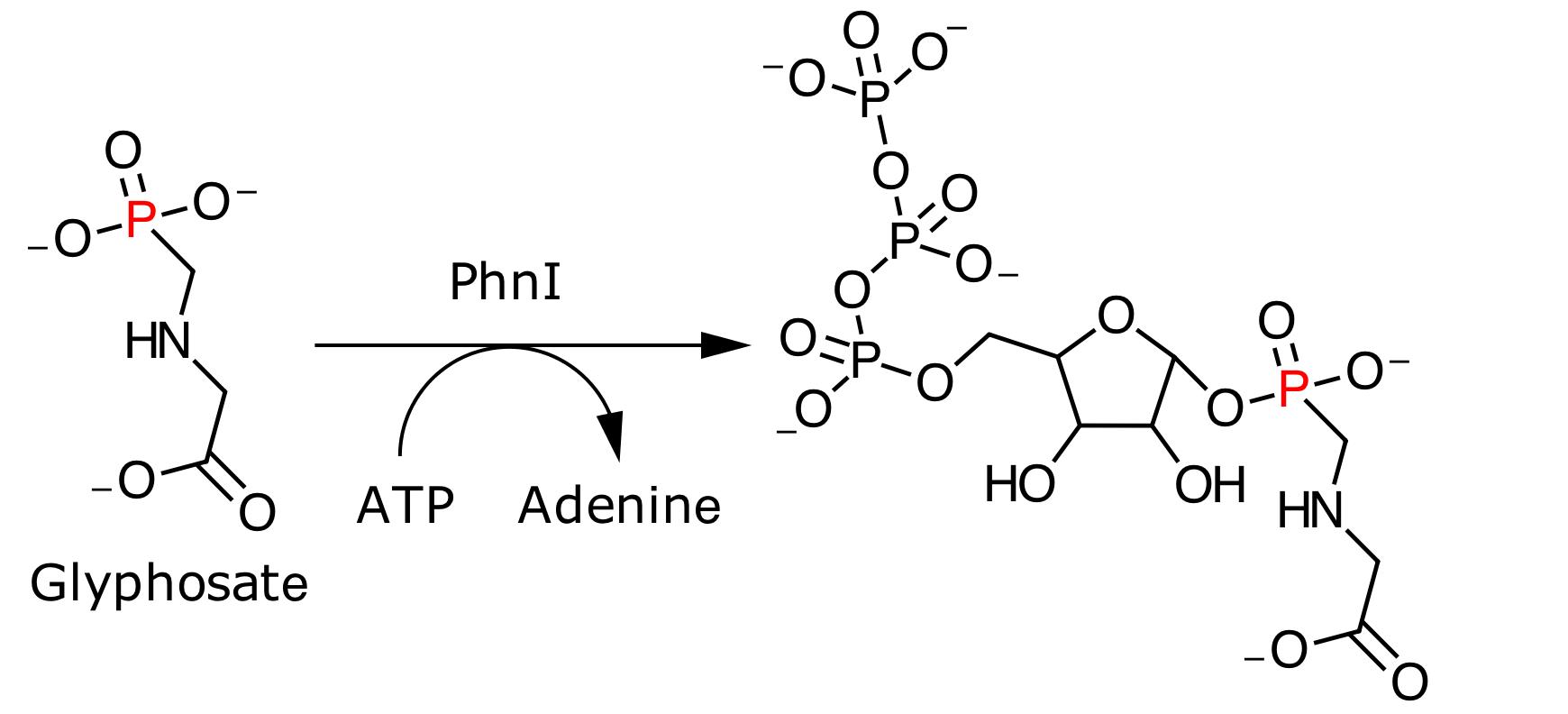Degradation of the herbicide RoundUp®
Reviewed information about the degradation of the active compound glyphosate in RoundUp® may eventually be useful in processes where the ability of the bacteria to break down organic compounds - such as phosphonates - used for removing substances that are hard for the environment to degrade.


Phosphonates are organic compounds containing an extremely stable chemical bond between carbon and phosphorus, a property that is exploited by agro, chemical and pharmaceutical industries, in the synthesis of herbicides, detergents, lubricants and pharmaceuticals. Among the quantitatively most important phosphonates is glyphosate, the active ingredient in the herbicide RoundUp®.
RoundUp® is the world’s most widely used herbicide, and it is used for controlling unwanted plant growth in agriculture, forestry and gardens. After the development of RoundUp®-resistant crop plants - e.g. soybean - such crops are especially grown in North and South America and in China and has led to an increase in the use of RoundUp®.
The active ingredient of RoundUp® is N-phosphonomethylglycine, also known as glyphosate. Glyphosate belongs to a class of compounds known as phosphonates, i.e. substances containing a chemically stable bond between carbon and phosphorus. Phosphonates include a large number of compounds such as lubricants, detergents and drugs to treat osteoporosis and some types of cancer. The nerve gas Sarin is also a phosphonate.
It is estimated that over 20,000 tons of various phosphonates are emitted annually to the environment in the Western Hemisphere alone, and it is feared that these persistent compounds can be detrimental to the environment. From time to time, scientific reports are published that document the harmful effects of RoundUp® upon the environment.
A number of microorganisms are capable of degrading glyphosate and other phosphonates to substances which they utilise in their metabolism. Phosphonates can be degraded by three different mechanisms, hydrolytic cleavage, oxidation and by a radical-based cleavage of carbon-phosphorous bonds.
Bjarne Hove-Jensen and Bjarne Jochimsen, along with a Canadian colleague, David Zechel, have examined the existing information on the enzyme-catalyzed processes involved in the degradation of phosphonates with special reference to the radical-based degradation of glyphosate and aminomethylphosphonate, AMPA. This information may be useful in processes where the bacteria's ability to degrade phosphonates can be used to remove these persistent compounds from the environment.
The results of this study are published in the American Society for Microbiology’s journal Microbiology and Molecular Biology Reviews.
More information
Associate Professor Bjarne Jochimsen
Department of Molecular Biology and Genetics
Aarhus University, Denmark
bjoc@mb.au.dk - +45 87155438
